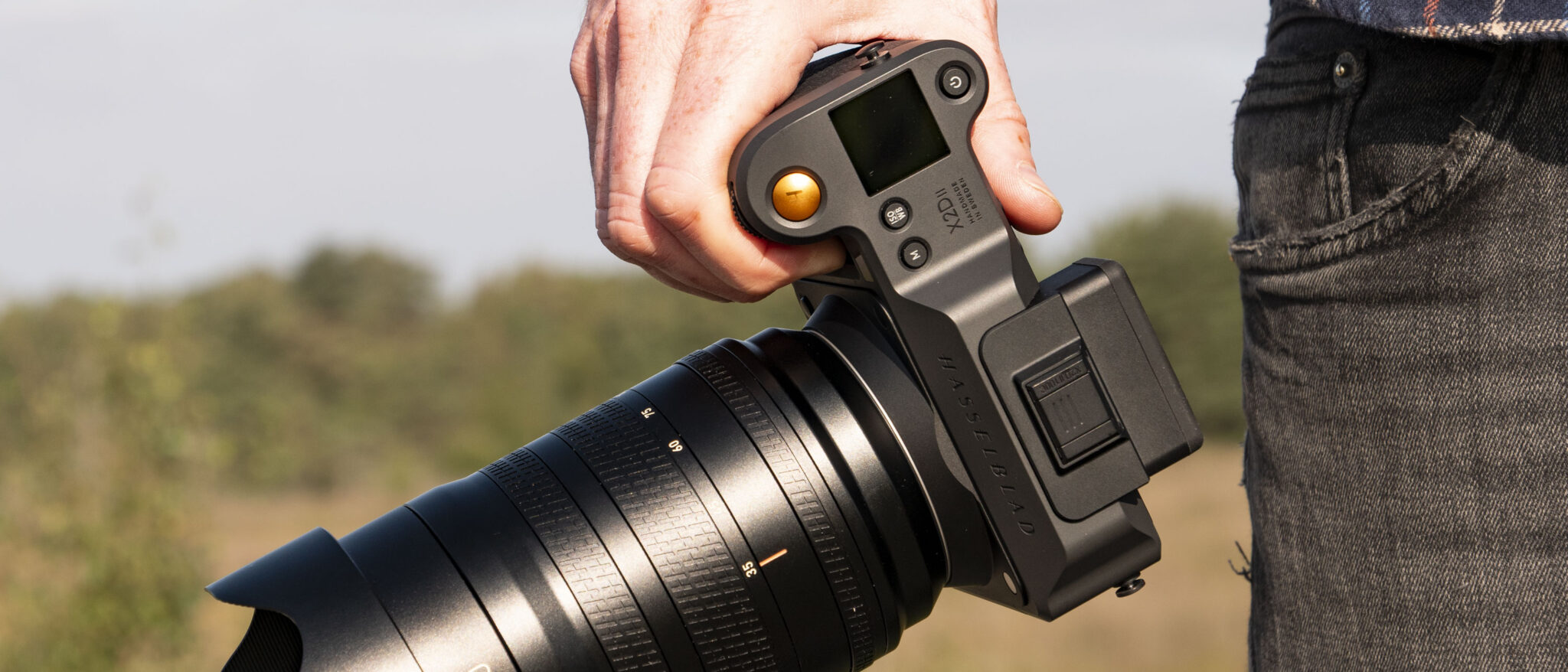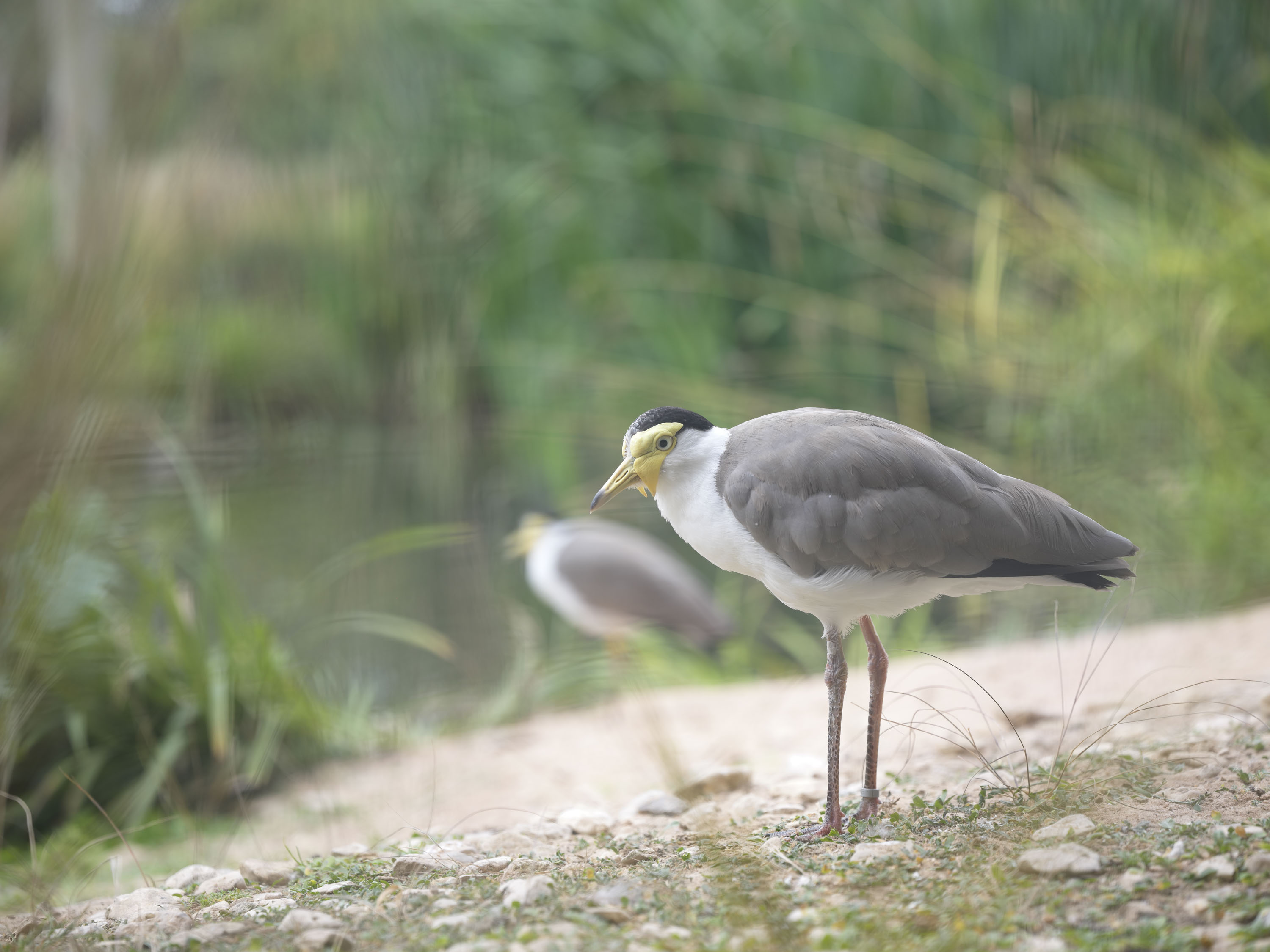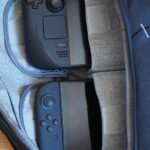Why you can trust TechRadar
We spend hours testing every product or service we review, so you can be sure you’re buying the best. Find out more about how we test.
Hasselblad X2D II 100C: two-minute review
If you’ve read any of my articles about Hasselblad’s ‘medium-format’ mirrorless cameras, you’ll know I have a soft spot for the premium Swedish camera maker’s X-series.
They’re stunning minimalist cameras with quality craftsmanship that are simple to operate and a joy to use. Naturally, it also helps that the recent models can shoot the best-looking photos this side of $10,000.
The latest addition to the series is the X2D II 100C, which is an update of my dream camera; it’s refined in all the right ways, and it costs much less than its three-year-old predecessor, pushing it closer to reality for photographers on the edge of splashing out.
If I were to pick one camera for landscape photography, this would be it. You can expect highly-detailed 100MP resolution, gorgeous natural colors that need little to no editing, and 16-bit files with rich HDR, along with probably the best image stabilization performance for this full-frame-dwarfing format.
Usually cameras in this 44 x 33mm sensor format are largely confined to the studio for still life and static subjects, but the X2D II is way more versatile than that, especially since it gets an all-new autofocus system, equipped with subject-tracking continuous autofocus and LiDAR.
For the first time with a Hasselblad I felt confident using its autofocus for shooting portraits, given its largely reliable people-detection skills. There’s no obvious gap in autofocus performance between Hasselblad and a Fujifilm GFX model now.
I also felt comfortable shooting without a tripod, getting sharp shots handheld with shutter speeds in excess of one second.
Don’t get me wrong – I still needed to be more involved in the process to get the results I wanted than when shooting with my full-frame Nikon, but the X2D II has strong automatic chops too.
Otherwise, for the most part the shooting experience felt largely the same as with the original X2D 100C, which is fine by me.
The X2D II 100C has what for me is probably the best camera design bar none: a gloriously minimalist body with exotic curves, a high-quality build with a slight reduction in weight compared to its predecessor, a larger-than-average tilting touchscreen with gorgeous color and clarity, plus various refinements that include a new joystick for adjusting the autofocus point and more.
A built-in SSD provides 1TB of storage for those mammoth 200MB raw files, and a CFExpress Type B card slot offers another storage option.
Some downsides remain: it has middling battery life, there’s still no video recording capabilities (which for some could be a plus, but for me would be a nice to have), while the quality of the 5.76m-dot viewfinder display feels only okay.
And while this is the best-performing Hasselblad yet, Fujifilm GFX rivals can shoot faster, while full-frame alternatives are faster still. The X2D II is a steady shooter, just not one for action.
But again, that’s fine – a camera that can deliver such rich detail can’t be expected to sustain high-speed burst sequences.
Improved autofocus performance was probably my top wish for a X2D 100C successor, and that wish has come true, alongside other design refinements which improve the overall user experience.
A pleasant additional surprise is the X2D II 100C’s list price: $7,399 / £6,400 (AU$ pricing TBC). That’s a good deal less than the X2D 100C, even if it’s still a pricey premium snapper.
Hasselblad X2D II 100C: price and availability
- Available now for $7,399 / £6,400 (Australia pricing TBC)
- Costs less than the original X2D 100C
- Launched alongside a new XCD 35-100mm f/2.8-4 zoom lens
Hasselblad products are pricey, and with good reason – the build quality is top-drawer, as is the medium-format sensor tech, plus there’s a 1TB SSD built-in. Yet despite several refinements in this latest model, it actually costs much less than the original X2D 100C, which was launched in September 2022.
The price difference depends on the region, but in the UK the X2D II 100C costs £1,000 less than its predecessor. It’s still pricey, as is the new 35-100mm zoom lens (28-80mm effective), which costs $4,599 / £4,100 (Australia pricing TBC), but this Hasselblad is edging closer to Fujifilm in terms of pricing.
Hasselblad X2D II 100C: specs
|
Sensor: |
100MP ‘medium-format’ sized 43.8 × 32.9mm |
|
Video: |
None |
|
Cont. shooting: |
3.3fps (approx) |
|
Viewfinder: |
5.76m-dot OLED |
|
LCD: |
3.6-inch, 2.36m-dot tilting touchscreen |
|
Battery (CIPA rating): |
Up to 327 shots, extended to 466 shots with HDR off |
|
Weight: |
29.6oz / 840g (with battery) |
|
Dimensions: |
5.85 x 4.17 x 2.95 inches / 148.5 x 106 x 75mm |
Hasselblad X2D II 100C: design and handling
- Very similar design to its stunning, minimalist predecessor
- Slightly lighter than before, new joystick added
- Large tilting touchscreen with stunning display
- 1TB built-in SSD and CFExpress Type B card slot
Having tested the Hasselblad X2D 100C at length, the X2D II feels very familiar. At 840g with battery, the latest model is slightly lighter, but it retains the same form factor, with a wonderfully minimalist layout and an exaggerated grip. Given the sensor format, the X2D II is impressively compact.
The finish on the high-quality body is different, and I prefer the new version both in appearance and feel.
We have the same touchscreen as before, and it’s delightful. At 3.6 inches it’s larger than most, plus it’s wonderfully bright, rich in color and contrast, and its touch response is spot on, which is something that can’t be said for all cameras – touch response feels more smartphone-like than camera-like.
Initially, pulling out the tilt screen stills feels a little fiddler than it could be, and the tilt motion is stiff; but it feels durable, and the up and downward tilt range is handy, especially for shooting at low angles.
That tilt range also means the screen clears the viewfinder, which sticks out from the body, for unimpeded viewing from low angles. The large 5.76m-dot viewfinder display is lovely too, although it’s far from the absolute best viewfinder I’ve used.
Once again we get a 1TB built-in SSD for storing images – and you’ll need it, with each raw file coming in at a whopping 200MB. There’s also the option to use removable media in the form of CFXepress Type B, which is one of the fastest card types today – I made use of both options during my review period.
One of the headline new features is an autofocus system that’s totally new to Hasselblad, which I’ll get onto in the next section, and in terms of the design this has prompted the addition of a joystick. This can be used to manually select the autofocus point – I find it a more intuitive method than the touchscreen. Despite the addition of the joystick, which is very welcome, the design still feels wonderfully minimal.
The same goes for the UI – menus are still super stripped-back and easily navigable, even with a new range of autofocus modes. The omission of video recording helps here, while there are no color profile options at all, and I really appreciate how quick and easy it is to make adjustments to settings.
I have only one niggle with design – the protective door for the USB-C port (the port which can be used to charge the camera), pops open all too easily, especially when using a camera strap.
- Design and handling score 5/5
Hasselblad X2D II 100C: features and performance
- 5-axis sensor-shift IBIS with up to 10EV stabilization
- New subject-detection autofocus recognizing humans, animals and vehicles
- Continuous shooting up to 3.3fps
The original X2D’s autofocus is poor by today’s standards – I used it to shoot a wedding, and I quickly reverted to my old DSLR for moments when I needed autofocus with a quick response.
Hasselblad has sensibly focused its attention on various performance improvements for the X2D II, and chief among them is a completely new autofocus system. The X2D II’s focusing is a different proposition altogether, almost matching Fujifilm GFX standards.
This is the first Hasselblad camera with continuous autofocus, plus the first with subject-detection autofocus, being able to recognize and track humans, animals and vehicles. It also utilizes LiDAR focusing, an improvement that comes courtesy of drone maker DJI (which bought Hasselblad some years ago, and which introduced the built-in SSD in previous models).
I tested the camera on all of the subject types it’s able to recognize, and it performed well, but don’t expect the same degree of autofocus sophistication you’ll get from, say, recent Sony / Canon / Nikon models.
Still, given it was my first time shooting portraits on location with a Hasselblad, I felt confident that the focus was going to be pin-sharp on my subject’s eyes, and that’s a big deal. The AF was also able to track my children’s pet guinea pigs and recognize birds and horses.
Hasselblad says image stabilization performance has also been improved, and it’s now rated up to 10EV, which would be a world-first for any camera in any format.
I was using the X2D II with the new 35-100mm lens, and put stabilization to the test. Based on 10EV of stabilization, at the wide-angle end of the lens zoom range I would expect the camera to be able to shoot sharp handheld shots with shutter speeds of 15 seconds.
Not a chance – that simply isn’t the case. I was getting sharp shots like I was before with the X2D, down to around three seconds, which is more like 7.5EV. Nonetheless, it’s still an incredible performance for such a high-resolution camera.
Despite its improved autofocus performance, the X2D II, like its predecessor, is not a camera for action photography. Its burst shooting performance is limited to around 3fps, which by today’s standards is very slow. No, this is a camera for single shots really, like landscapes and portraits.
- Features and performance score: 4.5/5
Hasselblad X2D II 100C: image quality
- Stabilized 100MP ‘medium-format’ 44 x 33mm sensor
- 16-bit raw files and ‘end to end’ HDR capture
- No video recording whatsoever
Image quality for the most part is much the same as from the X2D, but Hasselblad didn’t need to make any improvements here – the original model was already capable of taking the best-looking pictures I’ve ever made with a camera.
Not convinced? Check out this Hasselblad X2D vs Nikon Z6 II feature I wrote.
The X2D II utilizes the same 44 x 33mm sensor with 5-axis stabilization as before, shooting 100MP stills with 14-bit or 16-bit color-depth options. What is new, however, is what Hasselblad calls ‘end to end’ high dynamic range (HDR) capture – you simply check the box in image quality section of the menu to activate it.
HDR, as the name suggests, increases the range of tones in an image. Without it, the X2D II already has a wide dynamic range given the large sensor format and pixel density, but with it we get over 15EV of dynamic range. Check out some HDR landscape photos in the gallery, below.
I took photos with and without HDR active (in raw and JPEG simultaneously), and really I could take or leave HDR – the raw files are stunning either way. Yes, you get more visible detail in shadow and highlight areas, but you also lose some of the punch of the raw files as a result.
And there’s plenty of latitude to brighten shadows and darken highlights of raw files for HDR-like results using editing software. Perhaps the main benefit to in-camera HDR is that you can skip the editing process for the times when you want more detail in the tonal extremes. It could also mean that shooting in JPEG-only format is a more realistic option. I still think HDR capture is an excellent feature.
If you’re a camera owner who’s used to a choice of in-camera color profiles, like you get with virtually all other cameras, such as Fujifilm’s film simulations, then you’ll quickly notice the absence of those here. There’s not even a black-and-white mode.
It’s another example of Hasselblad’s minimalist approach which I appreciate, especially when the natural colors look this good – they’re somehow vivid and natural at the same time – so unless you like to dial the saturation slider up to unnatural levels, stylize your images, or go monochrome, you really don’t need to spend time tweaking colors in post. All the images in the gallery above are completely unedited.
The impressive image stabilization on board and improved autofocus performance really help too, meaning you can get sharp handheld shots more easily.
Hasselblad has left out video recording once again – the X2D II is purely for photographers. That will no doubt delight photography purists, but I can’t see any harm in adding video recording, besides perhaps clogging up the menus.
One thing to note about all of the images included in my galleries – they are original unedited files. With 100MP to play with, there’s plenty of cropping potential to focus in on certain details, like the distant person sat on a hillside, framed by the setting sun.
There’s also various aspect ratios available in camera, such as Hasselblad’s legendary X-Pan panoramic format.
- Image and video quality score: 5/5
Hasselblad X2D II 100C: Test scorecard
|
Attributes |
Notes |
Rating |
|---|---|---|
|
Price |
A premium camera for a premium price, but it’s surprisingly and significantly cheaper than it’s predecessor |
4 / 5 |
|
Design |
Simply one of the best camera designs of all time |
5 / 5 |
|
Feature and performance |
Much improved autofocus, built-in SSD storage, but slow burst shooting speeds |
4.5 / 5 |
|
Image quality |
The best looking photos you can get, for the price. No video recording though. |
5 / 5 |
Should I buy the Hasselblad X2D II 100C?
Buy it if…
Don’t buy it if…
Hasselblad X2D II 100C: Also consider
Like the sound of the Hasselblad X2D II 100C but keen to know what else is out there? Here are a couple of solid alternatives…
How I tested the Hasselblad X2D II 100C
- Hasselblad loaned me the X2D II 100C for three weeks ahead of its launch
- I had the new XCD 35-100mm f/2.8-4 lens to test it with
- I’ve taken camera and lens pairing on several outdoor photography shoots
I’ve had plenty of chances to use the X2D II with the new XCD 35-100mm f/2.8-4 lens ahead of their launches, taking the pairing on a few landscape photography trips, plus for candid portraits of humans and animals.
I’ve shot during daylight and nighttime, outdoors and in, and paired the camera with the latest (beta test) version of Hasselblad’s Phocus app for remote control of the camera and image uploading.
My testing took place over the course of about one month.
First reviewed August 2025
Read the full article here















